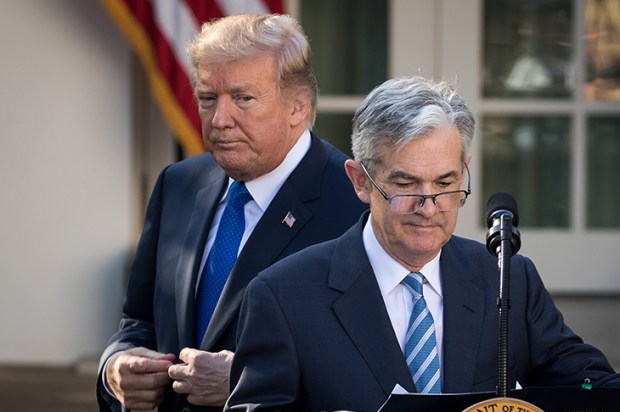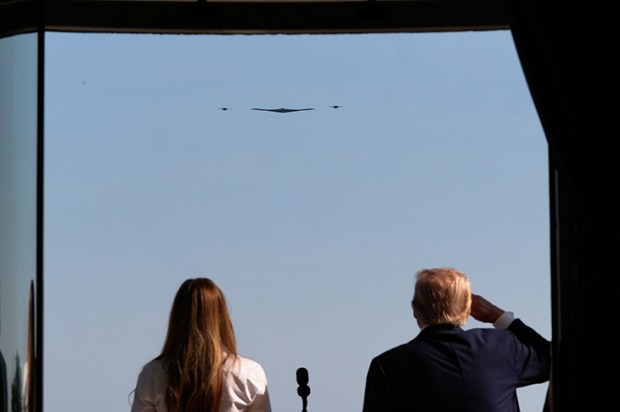Imagine a board meeting so momentous that its minutes would be remembered a millennium later.
That meeting took place seventeen hundred years ago this very week in the town of Nicaea (now Iznik in Turkey). It gained status by being chaired by the Ruler of the World, Constantine, committed to Making Rome Great Again. It gained gravitas by being concerned with deep questions of philosophy and meaning, not diversity quotas or the need for urgent action on the Roman Warm Period (warmer than ours). It had a celebrity angle, with Santa Claus on the board. The other directors were leaders of a mass movement that, until a dozen years earlier, had been ruthlessly suppressed as a threat to the Roman way of life.
Why was an emperor now chairing a council of such subversive citizens? Because of something strange that happened to him in 312 AD at the battle of Milvian Bridge outside Rome. Set for a show-down with his imperial rival, he saw in the clouds a sign of the cross and the message ‘In hoc signo vinces’ (In this sign, conquer). Hastily painting said sign on the shields of his men, he did indeed conquer, to become the sole ruler of the Western Empire.
You can still see Constantine’s Triumphal Arch as you drive past the Colosseum, erected by the Roman Senate to honour their new emperor’s victory. You can still see the initials of Constantine’s message, ‘IHS’, engraved in many churches, as that triumph for the emperor was a blessing for the church. A year after the battle, Constantine promulgated the Edict of Milan, granting official tolerance to Christians for the first time – ending the savage persecution they had endured from the time of Nero in 64 AD (he who set Christians ablaze on stakes to light his garden parties) to the final, worst reign of terror under Diocletian and Galerius from 303 AD.
It is intriguing that our own Western Emperor, this very month, has issued an Edict that again extends tolerance to Christians. This man, too, faced a life-or-death moment (the assassin’s bullet grazing his head in July last year) and believed he was now on a joint ticket with God to Make America Great Again. Whatever artful deal he may have struck with the Deity, he has certainly given a good deal to people of faith after toxic years under Obama and Biden.
On 1 May, the White House reported, ‘Today, President Donald J. Trump signed an Executive Order establishing the Religious Liberty Commission to safeguard and promote America’s founding principle of religious freedom.’ The President had earlier established ‘a Task Force to Eradicate Anti-Christian Bias at the Department of Justice to end the anti-Christian weaponisation of government and unlawful targeting of Christians’. He also ‘marshalled all federal resources to combat the explosion of anti-Semitism on our campuses and in our streets since 7 October, 2023’.
Obama did not set bishops ablaze in the Rose Garden, nor did Biden throw peaceful anti-abortion protestors to the grizzlies; the persecution has been limited, but Trump did well to counter even early signs of imperial harassment.
Meanwhile, back at the Council of Nicaea, Constantine had gathered the bishops to resolve a major dispute.
Having backed the new constituency of Christians as the up-and-coming force in the Empire, and with a mother who was Christian (she later toured the Holy Land and ordered the building of the Church of the Nativity in Bethlehem) he discovered the church was ferociously divided by the teachings of a priest named Arius.
At the heart of the dispute was an abstract Greek noun: ‘logos’, variously translated as word or meaning, mind or reason. Jordan Peterson calls logos ‘an essential, fundamental component of Western civilisation’. Greek philosophers from Heraclitus to the Stoics had used the word to signify the intelligibility of the cosmos and the human capacity to grasp rational order, material and moral. For the Stoics, who strongly influenced Roman culture, logos was nothing less than divine reason, the Mind of God.
Then the Christians took logos to another level. Five words inked on papyrus in the first century sum up their metaphysical revolution: Καὶ ὁ Λόγος σὰρξ ἐγένετο – ‘And the Word became flesh’. Cosmic reason, the Mind of God, had written itself into our human story as a Jew from Bethlehem – with the object, the Christians said, of showing us the heart of God and lifting human souls into the life of God.
That sort of idea has the power to create a culture, and that was what was thrashed out at Nicaea in 325.
Most of the thrashing was aimed at the troublemaker, Arius, who taught that the logos, identified with Christ in John’s gospel, was merely a supreme creature, not fully divine. His compromise made sense to many Romans, who had their own semi-divine superheroes like Hercules. It did not go down well with bishops who had led their flocks through torment and death for their full-blooded faith in God incarnate.
One ardent opponent of Arius was Bishop Nicholas of Myra. This man was revered for his practical charity, living among the destitute and directing gifts to the needy. Later centuries would know him as Saint Nicholas, or Santa Claus, but he was far from merry at Nicaea.
It’s too good a story not to be true, how Santa Claus blew his stack at the Council and clobbered the Reverend Arius. He’s making a fist and checking it twice; he’s striding across the great hall and giving a right hook to the heretic. Come this Christmas, good boys and girls better watch out that their opinions on absolute Being have no hint of Arianism.
Arius lost, and every Sunday for seventeen centuries Christians have stood to ratify the minutes of that ancient meeting, reciting the Nicaean Creed in triumph with Santa: No, Arius, Christ the logos is ‘light from light, true God from true God, consubstantial with the Father’.
That claim born in Bethlehem and confirmed at Nicaea still has power to re-create a culture.
Got something to add? Join the discussion and comment below.
You might disagree with half of it, but you’ll enjoy reading all of it. Try your first month for free, then just $2 a week for the remainder of your first year.












